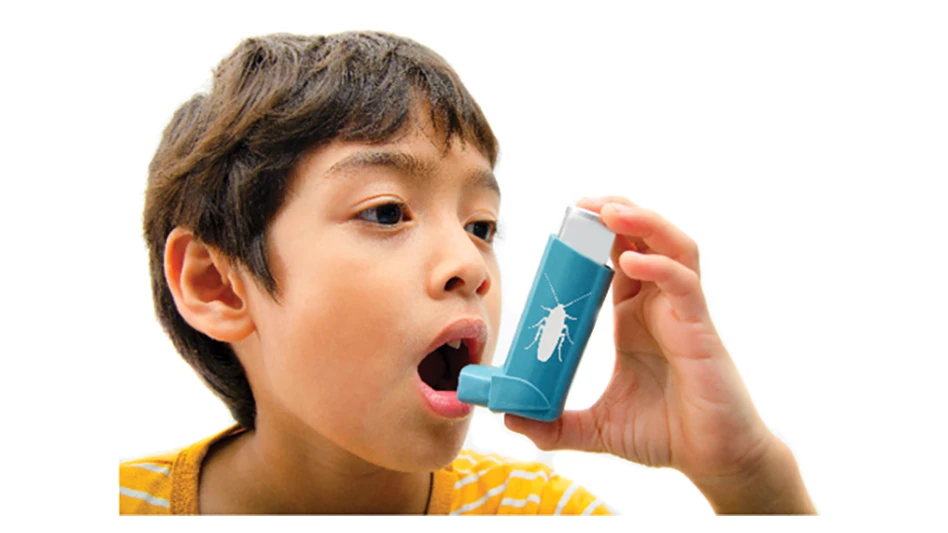California ground squirrels, Spermophilus beecheyi, are among the most troublesome wildlife pests encountered by PCOs, but they’re more than simply a nuisance. As one of a handful of pests that harbor fleas capable of transmitting bubonic plague, they represent a serious public health threat if not managed properly. Scimetrics Ltd. recently introduced Kaput-D® Combo Bait to combat this potentially life-threatening public health pest, the first in a series of “combo” baits developed by the Colorado-based company.
IT’S PERSONAL. The “combo” bait concept had been in the back of Scimetrics’ founder Richard Poche’s mind for nearly two decades, the seeds of which grew out of personal tragedy. “When I was in the Peace Corps in Niger, Africa, a good friend’s wife died of Lassa fever which changed the direction of my career,” he recalled. The loss prompted Poche to begin studying the impact of structural pests on public health throughout the world. “I have always been interested in rodent-borne disease research, and since we have human cases of plague almost every year in the United States, it seemed logical to start with fleas,” he said.
While throughout his career Poche has enjoyed “thinking outside the box,” the “combo” bait concept posed several technological challenges that required many years of study. It was an effort partially funded by a CDC grant that supported research into strategies for responding to a potential bio-terrorist attack involving plague.
“Our greatest challenge was to isolate an insecticide or insect growth regulator (IGR) that was systemic in action and was readily absorbed into the rodent’s blood system,” Poche said. “Once good ones were located, we then had to determine the proper concentration to ensure enough went into the bait and a sufficient amount was absorbed into the blood to kill the fleas.”
While access to quality active ingredients was never an issue, palatability was a concern. “As PCOs are aware, rodents can be very picky when it comes to food selection,” Poche said, so a palatable formulation needed to be developed before Scimetrics could apply for an EPA label for its Kaput-D Combo Bait. After additional formulation changes, a label was granted in February 2008 for the control of California ground squirrels, followed three months later with a label for rats, mice and voles, as well as the fleas they host. (Visit www.scimetricsltd.com to download copies of the labels.)
“As an industry we have been bogged down by thinking the only way to handle the (flea) problem was to bait with a rodenticide, then dust with an insecticide,” Poche said. “The irony is that this technology is not rocket science.” It simply required thinking differently about how to address two very different — but related — pest problems.
The Kaput-D Combo Bait labeled for California ground squirrels contains 0.0025 percent diphacinone, a rodenticide, and 0.025 percent imidacloprid, an insecticide. “With California ground squirrels, it is best used when vegetation is dry and the species will be more likely to feed on baits,” Poche said. “This period is generally from February through June, then again in the fall from September to November, depending on the weather.”
The Kaput-D Combo Bait labeled for rats, mice and voles contains 0.025 percent warfarin and 0.02 percent imidacloprid. “With rats and mice, as every pest management professional is aware, the problem persists throughout the year,” so this formulation is readily consumed by rodents year-round, Poche said.
Regardless of the formulation, however, “the principle is the same, no matter which rodent species” is being targeted, according to Poche. “The rodent eats the bait, which contains an anticoagulant rodenticide (warfarin or diphacinone) and a systemic insecticide (imidacloprid). As the rodent slowly dies, the insecticide is absorbed into the blood. Fleas feed on the rodent hosts — whether California ground squirrels, Norway rats, roof rats, or house mice — and ingest the blood containing the systemic compounds. The fleas generally die within several hours after taking a blood meal.”
PUBLIC HEALTH BENEFITS. Poche said the “combo” bait offers a number of public health benefits to pest management professionals and their customers. “When a PCO eliminates rodents — whether rats or ground squirrels — once the host dies, the fleas will search out a blood meal from a new host. In urban situations where there are serious rodent infestations, elimination of rats and mice can liberate thousands of hungry fleas,” he said. However, “your average homeowner is rarely aware that killing rodents on their property will release fleas, which might seek out pets or children.”
West Coast residents are particularly aware of the impact of California ground squirrels on the state’s agricultural crops and property, not to mention public health. “Virtually every year, there are reports of plague from the western U.S., and often the ground squirrel is the primary vector,” Poche observed.
While only two formulations are currently available, additional “combo” baits are currently in development, according to Poche. “At least five are in the works right now. In addition, we are seeking to add prairie dogs, Wyoming and rock squirrels, and Columbian ground squirrels to labels.”
A paper highlighting use of the bait in a field study at Vandenberg Air Force Base will be presented at the Symposium on the Ecology of Plague and its Effects on Wildlife sponsored by the U.S. Geological Survey, U.S. Fish & Wildlife Service, and Colorado State University in November. Visit www.fort.usgs.gov/plague.
I.D., Biology and Behavior of California Ground Squirrels
The California ground squirrel, Spermophilus beecheyi, is easily identified as it forages above ground near its burrows. The squirrel’s body measures 9 to 11 inches and its semi-bushy tail adds another 5 to 9 inches in length. The fur is brownish gray and speckled with off-white along the back; the sides of the head and shoulders are light-gray to whitish.
One subspecies that occupies most of Northern California has a dark, triangular-shaped patch on its back between the shoulders; this patch is missing from other species. While ground squirrels are similar in appearance to tree squirrels and may climb trees, when frightened they will always retreat to a burrow, whereas tree squirrels will climb a tree or tall structure and never use a burrow.
Ground squirrels live in a wide variety of natural habitats but usually avoid thick chaparral, dense woods and wet areas. Populations may be particularly high in grazed rangelands and in areas disturbed by humans such as road or ditch banks, fence rows, around buildings and in or bordering many crops.
Ground squirrels live in a burrow system where they sleep, rest, rear young, store food and avoid danger. The burrow openings are about 4 inches in diameter, but can vary considerably. The burrows may be 5 to 30 feet or more in length and may go 2 to 4 feet below the soil surface. Often there is more than one opening in a burrow system. Ground squirrels live in colonies that may include several dozen animals in a complex of burrows. More than one squirrel may live in a burrow.
Ground squirrels are active during the day, mainly from mid-morning through late afternoon, especially on warm, sunny days. Ground squirrels have two periods of dormancy during the year. During winter months most ground squirrels hibernate, but some young may be active at this time, especially in areas where winters are not severe. During the hottest times of the year most adults go into a period of inactivity, called estivation, that may last a few days to a week or more. During these periods, the burrow appears open at the entrance but the squirrel plugs it with soil near the nest.
Ground squirrels breed once a year, averaging seven to eight young per litter. Timing of breeding varies with location: in Southern California breeding begins in December, in the Central Valley in February through April, and somewhat later in the mountain ranges. Above-ground activity by adults is at a maximum at the height of the breeding season. The young are born in the burrow and grow rapidly; by about six weeks of age they usually emerge from the burrow. At six months they resemble adults.
Ground squirrels are primarily herbivorous. Their diet changes with the season. After emergence from hibernation, they feed almost exclusively on green grasses and herbaceous plants. When annual plants begin to dry and produce seed, squirrels switch to seeds, grains and nuts, and begin to store food. Ground squirrels usually forage close to their burrows. Their home range typically is within a 75-yard radius of their burrow.
Source: University of California-Davis, Pest Notes

Explore the September 2008 Issue
Check out more from this issue and find your next story to read.
Latest from Pest Control Technology
- Terminix Service's Leaders Inducted into South Carolina Business Hall of Fame
- Richard Christner on Colorado's State Preemption Roll Back Affecting Business Growth
- How to Get Rid of Odorous House Ants
- Massey Services Promotes Herndon to Director of Sales for Multi-Family Division
- NPMA Announces First Recipients of NPMA PRO Certified Credential
- Pestmaster of the Hudson Valley Acquires Catskill Animal Damage Control
- Photo Slideshow: Ant Identification Tips
- Video: Top 10 PCT Photo Contest Finalists





